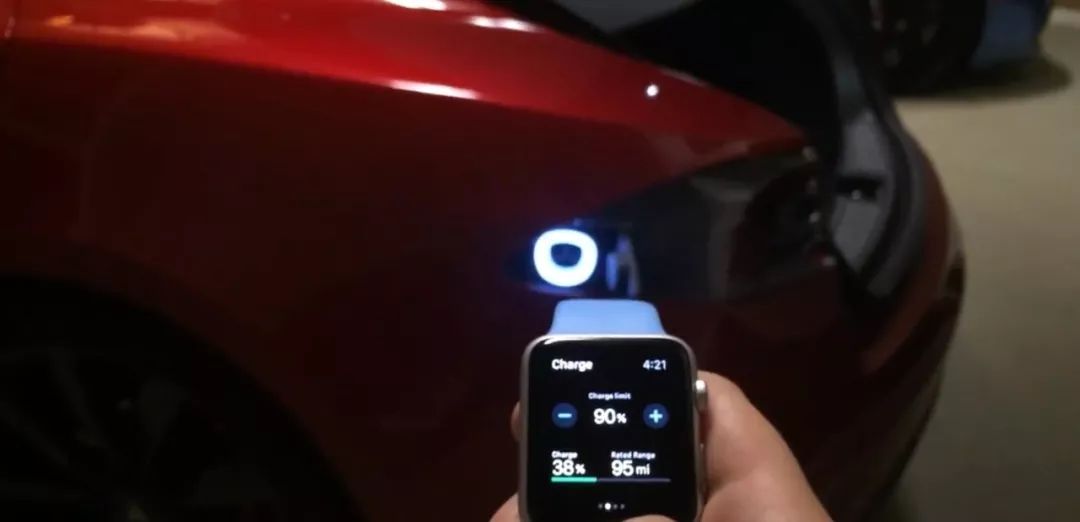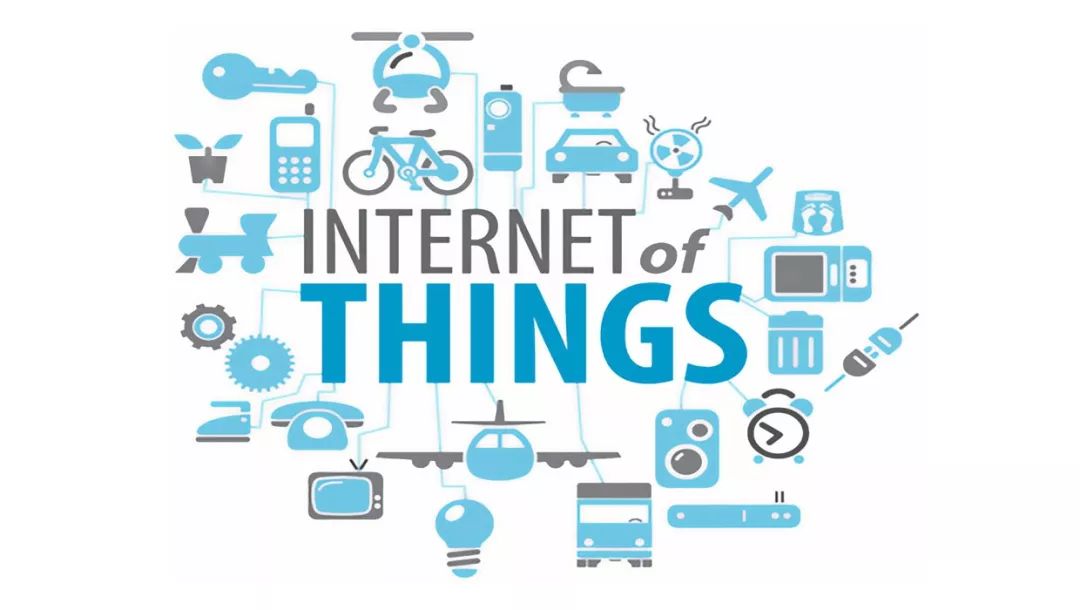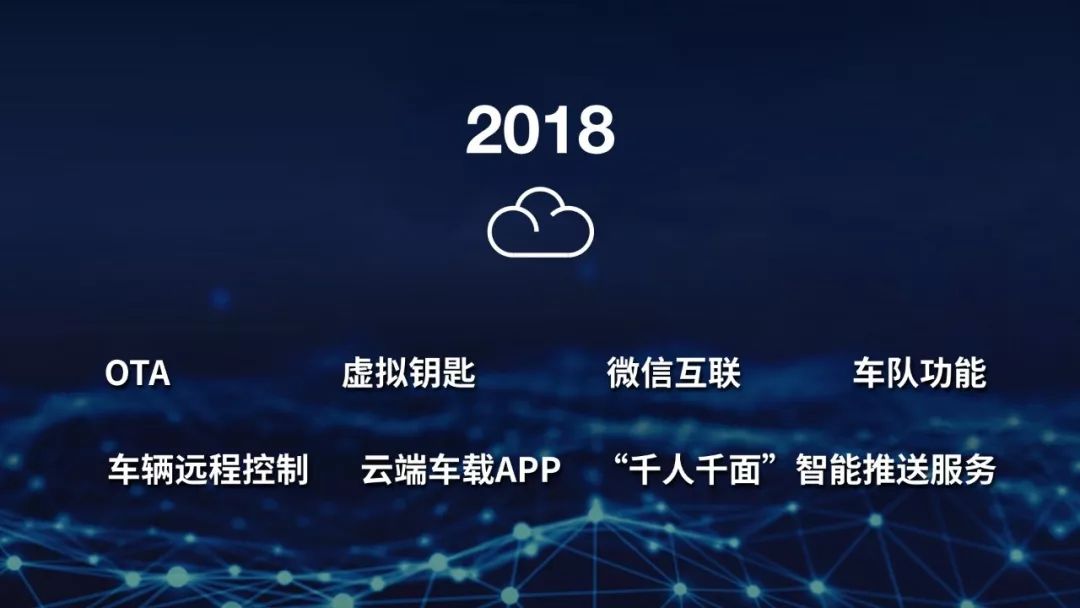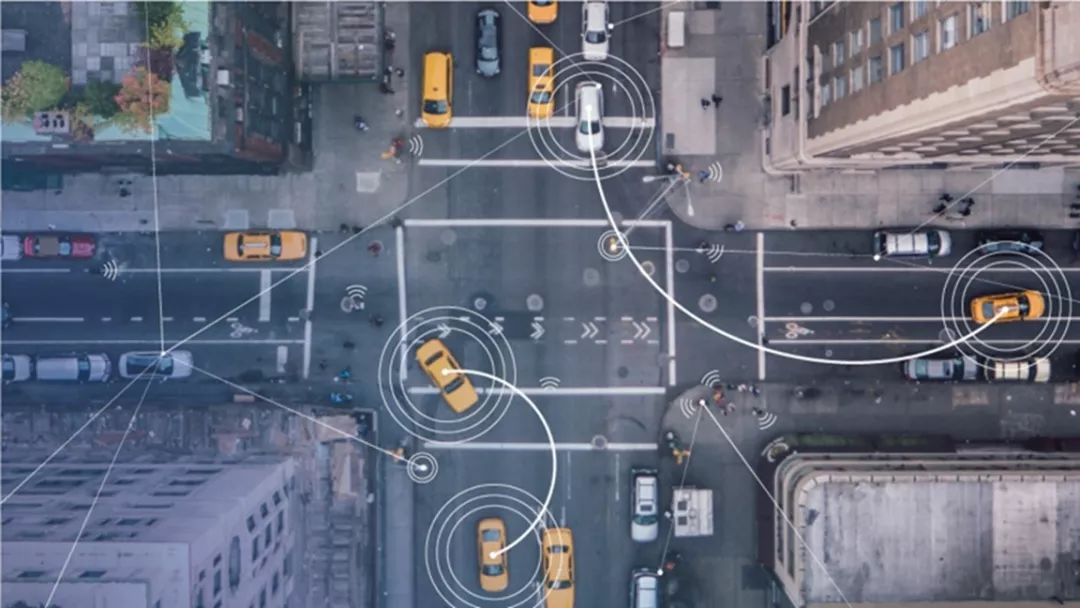Ordering a cup of Americano or latte downstairs at work used to be a daily routine for many urban youth. However, disruption of tradition is inevitable. In the past six months, we have started getting used to opening a Mini Program of “something coffee” on WeChat, where coffee is of decent quality, with lower prices and one-click delivery to our doors, well-packaged and fresh. As a result, urban youth now have one more reason not to go to coffee shops downstairs. Do you believe that this is just the beginning? In the age of the Internet, we will always need stronger imagination.
Control Your Car with the Little Square Box in Your Hand
The impact of the Internet includes automobiles. I have mentioned in “A Strong Strike from a Traditional Auto Company” that car networking is an irreversible process. Most car owners are only aware of a large iPad installed in their cars, which looks stunning when navigating, but can only be summarized in one word: cool.
So what?
This kind of car machine only lowers the probability of taking out phones from the pocket, affects the sales of phone holders on Taobao, and provides little practical help for us. What the car networking is supposed to do is what phones cannot.

Qualified car machines should first make driving a more worry-free affair. After communicating with many Tesla owners about the frequency of using the phone APP, the owners’ favorite function is undoubtedly using the phone to remotely start the car’s air conditioner, which should be considered the first stage of car networking – exclusive account.
Cloud-based after-sales service is what the next generation of car machines must do. This can already be seen in SAIC-GM’s latest car system. Apart from continuously updating car machine functions through OTA, car machines can directly connect to service centers by assessing the health of vehicles, and recommend after-sales maintenance or maintenance.
One-click after-sales service can already be seen in NIO’s service system, showing that there is a market demand. But the high cost of service personnel has always been our concern about whether this service is sustainable.If we ignore the need for human intervention, intelligent vehicle systems can provide car owners with the best recommendations for after-sales service. With just one app, car owners can have a global grasp of their vehicles, which is suitable for most car owners and can efficiently improve their driving experience.
Don’t talk more, do less
With the intelligence and networking of furniture in recent years, smart speakers have been welcomed by technology companies. They are considered the entrance to the Internet of Things. From Amazon Echo to Tmall Genie and Xiaomi AI, they are not just a music player or entertainment assistant; the AI technology behind the speakers is the core of the entire product.

This all tells us that the future will become a situation where everything is just a voice command away.
Perhaps it is not just clothes, food, and housing. On May 15th this year, at the hammer launch, Luo Yonghao released his revolutionary product TNT. TNT is a working system that can connect to HDMI through hammer phones and project to a display screen, making Android have workstation functions. However, if TNT only projects the phone into a desktop office, it cannot be called a “revolution.” Luo’s remarks are often only partially true. TNT is not just about desktop office, and voice and touch interaction is the real “revolution” at that launch. Software produced by hammer may be the ultimate application of iFlytek. This is evident in the recent release of “Bullet SMS.”
In terms of efficiency, Luo Yonghao said that “voice + touch” will be much more efficient than “keyboard + mouse,” but most people still believe that “keyboard + mouse” is still more efficient in the office environment. Luo and hammer will have to demonstrate and prove that TNT is more efficient, but currently, it is proven that “voice + touch” can complete office work.

Due to the awkwardness of voice and interaction, the current office scene is not the most suitable for voice interaction. The use of smart speakers is for the home, a relatively enclosed and private space. But what about cars?At the SAIC-GM connected car communication meeting two weeks ago, I heard about the concept of Vehicle to Everything (V2X) again. This is a very macro scene, and voice systems with learning ability powered by artificial intelligence will be the entrance to V2X. In fact, General Motors has been a pioneer in V2X. As early as the 1950s, General Motors created a conceptual highway embedded with a large number of communication devices, which enabled the most basic “autopilot” communication between vehicles and roads. However, making such a highway in that era was undoubtedly costly and challenging.
Even today, “autopilot” may still be far away from us, but before that, vehicles will rely on intelligent in-car systems and become the driver’s advanced voice assistant. Services related to travel, such as catering, entertainment, and travel reservations, will soon be easily completed by “chatting” during our journey.
Re-examining the relationship between people and cars
It is already the year 8102. If we still evaluate the comfort of a car based solely on seat comfort and interior space, it is quite subjective. If we compare the car connectivity to a connected living room, then the difference between car systems will be like DOS, Windows, Android, and Apple, and the applicability of car systems will directly affect the comfort of driving a car.
In a previous article, I pointed out that Tesla was the first to introduce me to intelligent car systems, but the slow progress of Tesla’s localization software made the appeal of the large screen almost nonexistent.
What surprised me the most is the “Zebra Zhixing” system, which was first installed in the Roewe RX5. The “voice + touchscreen” interaction advantage is clearly reflected in this system, and the loading of Gaode maps and Xiami music also solves the most common user demands in the car. Soon enough, this ride-hailing platform, which is a joint venture between SAIC and Alibaba, joined hands with PSA Group (Peugeot and Citroen) and Ford Motor Company, and the latest Citroen C5 Aircross and Ford Territory have installed the “Zebra Zhixing” system. At one point, I felt that joint venture car companies were falling behind in the car connectivity competition.Until SAIC-GM released its new generation of connected car system, which I think emphasizes the extension of the relationship between people and cars more than “Bamboo Intelligence”. In addition to the annual standard 24G lifetime free traffic, the vehicle can be OTA upgraded online, exclusive accounts connecting mobile phones and vehicles, Gaode maps, and Netease Cloud Music, there are three points that impressed me.

The first point is intelligent personalized recommendation. If voice input is the innovation of TNT, then “intelligent personalized recommendation” is where SAIC-GM brings AI into reality. The “Bamboo Intelligence” voice assistant is famous for the “Hello Bamboo” wake-up word, but artificial intelligence is actually about getting rid of “Hello Bamboo”. The core of vehicle intelligence will not be about people actively seeking the vehicle machine, but the vehicle machine actively understanding people’s needs through continuous learning.
Take the most frequent car navigation as an example. Gaode maps on “Bamboo” automatically pushes nearby parking lots in order of distance after arriving at the destination. However, in actual use scenarios, intelligentization is needed to combine parking fees, charging facilities, and available parking spaces. The design concept of “intelligent personalized recommendation” is not just about post-navigation recommendations, but the entire trip, from getting on the car, recommending suitable music, reminding of the weather, recommending restaurants, and real-time navigation, all of which will be based on artificial intelligence.
The second point is user-centered product design. Finding the target audience has always been what Internet companies do, and now car companies have to do it too. “My Car” in WeChat is a small software that builds a highly smooth connection between vehicles and mobile phones.
Nowadays, whenever we go to a strange destination with friends, we usually send each other addresses on WeChat. If the navigation on the vehicle machine is not useful, we use the mobile phone navigation directly. If the navigation on the vehicle machine is good, we will choose to free ourselves from the phone, which requires re-entering addresses and checking again, and the location may be different. Through “My Car” in WeChat, geographic locations or music links on WeChat can be directly pushed to the vehicle machine, and navigation or playing can be started.
These details, including in-car payments, driving habit analysis, and only requiring virtual key authorization when renting a car, are reflected in the latest car connectivity system.
The third point is that SAIC-GM will launch a new intelligent connected car hardware product, “Angie Star Smart Driving Safety Rearview Mirror,” specifically for users without connected car applications, further covering the user base. Because our former living rooms didn’t have networks, we didn’t stay in living rooms without networks. However, once we got used to networks, we couldn’t go back.> There is an impressive user base for SAIC-GM, who prefer intelligent features on their vehicles rather than a new vehicle. Compared to new car users, they have a significant advantage. We can see the learning speed of AI vehicles from the user base of in-vehicle systems. Thus, the large user base brings promising prospects for the future market, just like the expectations for Tesla’s autonomous driving system, which relies on a huge dataset gathered from users’ vehicles.
As SAIC-GM released their new vehicle system, other major automakers such as Geely’s GKUI and BYD’s DiLink all invest heavily in in-vehicle systems. As vehicles become smarter, car networking becomes increasingly important. Therefore, it is only a matter of time before international and national car makers, joint venture brands or independent domestic brands all join forces to develop the car networking ecosystem and expand their user base. Early adopters will have a greater advantage. Are joint ventures ready for the challenge? SAIC-GM has already started.
“Would you like a cup of Starbucks coffee from Alibaba? Would you like some spicy skewers? Are you going to Yangcheng Lake?”
“No, I am planning to lose weight. Help me book a gym!”

This article is a translation by ChatGPT of a Chinese report from 42HOW. If you have any questions about it, please email bd@42how.com.
